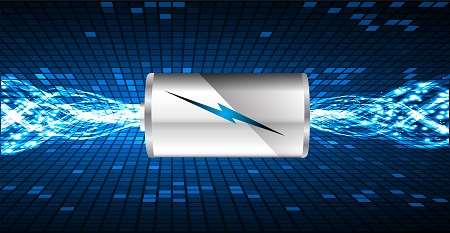Battery Management and Low Power Designs
Low power designs refer to the development of electronic devices, circuits, and systems that consume minimal power while still meeting performance and functionality requirements. This is particularly important in modern electronics, where energy efficiency is crucial for extending battery life, reducing heat dissipation, and minimizing environmental impact. Battery Management for portable devices are one of the most crucial aspects of any embedded product. Broadly speaking, Power and Battery Management for Portable Devices involves minimizing the current usage and in some cases the peak current drawn from the power source. Various different factors guide the product development of low power designs – i.e. a target power at which it needs to operate ensuring low or minimum power consumption.
Battery Management for Portable Devices
 With 25 years of experience in hardware design and software development for embedded devices, We, at Mistral offer effective and efficient power management techniques for embedded product designs. We offer solutions to implement power management and battery Management for Portable Devices using techniques to lower heat dissipation and increase system stability. The performance of low power designs is highly dependent on adequate power and battery management. Embedded devices are being packed with more and more features while the power budget has not changed much.
With 25 years of experience in hardware design and software development for embedded devices, We, at Mistral offer effective and efficient power management techniques for embedded product designs. We offer solutions to implement power management and battery Management for Portable Devices using techniques to lower heat dissipation and increase system stability. The performance of low power designs is highly dependent on adequate power and battery management. Embedded devices are being packed with more and more features while the power budget has not changed much.
This requires effective battery management using the available hardware and software resources. Designing low power systems require a set of techniques and methodologies aimed at reducing the overall dynamic and static power consumption of ICs. Power and Battery Management for Portable Devices can be implemented at different levels – silicon, hardware or software. Power optimization and battery management for portable devices can be done via energy efficient peripherals and adaptive digital systems to implement low power designs and power aware software programs.
Low power Designs
 Power is a key differentiator in many designs, and for IoT and edge devices it has become a competitive differentiation. Product development companies are continuously pushing the boundaries on new features and functionality, all packed into portable, handheld, and battery powered devices.
Power is a key differentiator in many designs, and for IoT and edge devices it has become a competitive differentiation. Product development companies are continuously pushing the boundaries on new features and functionality, all packed into portable, handheld, and battery powered devices.
Mistral’s engineering team has the experience and expertise needed to build low power designs that ensure low power consumption, effective power optimization and efficient battery management for portable devices. Low Power Designs are a combination of software, hardware and optimized manufacturing techniques. In these combination power reduction can be implemented at different levels of the design abstraction, i.e., system architecture, algorithms, circuit, and at the process level. Some key aspects and techniques followed by Mistral for low power designs include designing a power-aware architecture using energy-efficient components and power management ICs, software optimization and other low power methodologies aimed at reducing the overall dynamic and static power consumption of the product.
This includes techniques such as clock gating, power gating, voltage scaling, leakage current reduction, and optimization of digital and analog circuits for energy efficiency. Low power designs are driven by the expectation of the manufacturer and the user on the duration of time a product needs to operate before being depleted of the available power. Our battery management techniques for low power designs ensure lowering of heat dissipation, increasing system stability, implementation of Power Management at silicon and software level ensuring less energy usage, saving cost and reducing the impact on the environment.
Our expertise in battery management for portable designs include optimizing charging circuits, developing battery gauges to ensure longest possible run-time while ensuring data protection, and implementing safety circuits that provide multiple independent levels of protection for highly energetic batteries. Mistral has worked with global product developers to build energy-efficient low power systems ensuring Battery Management for Portable Devices by implementing efficient power optimization techniques. These low power designs are based on the latest multi-core processors like ARM Cortex A8, ARM Cortex A9, ARM Cortex A15 and open-source OSes like Android and Embedded Linux. Click here to read a blog on Power Management – Hardware-Software Co-design and Power Optimization for feature rich devices.
EXPERTISE

Power Management Techniques
- Power Optimization: Timeout Policies, Predictive Policies and Stochastic Policies
- Battery Management for Portable Devices
- Battery Management: Battery Fuel Gauge and Battery Calibration
- Gated clock logic for PLD devices

Software Implementation
- Power Optimization and Power Management APIs for Low Power Designs
- Semantic Energy Modes (i.e., off, standby, light, and full)
- Arbitrary Energy Modes (i.e., device specific)
- Dynamic Voltage and Frequency Scaling
- Battery Management for Portable Devices including monitoring, accounting, auto suspend and auto resume mechanisms
- Autonomous Power Manager

Power Management Implementation (Silicon Level)
- Selection of chipsets that support power saving
- Dynamic Voltage and Frequency scaling (DVFS)
- Dynamic Power Switching
- Automatic Voltage Scaling

Power Management Implementation (Electrical Design Level)
- Power Profiling
- Clock and power tree architecture design for power management
- Electrical design to control power consumption dynamically

Power Management Implementation (Software Design Level)
- Power Profiling
- Power optimization and power management framework to dynamically monitor and control power usage
- Exercise power management features of the silicon based on product use case

Power Management Techniques
- Power Optimization: Timeout Policies, Predictive Policies and Stochastic Policies
- Battery Management for Portable Devices
- Battery Management: Battery Fuel Gauge and Battery Calibration
- Gated clock logic for PLD devices

Software Implementation
- Power Optimization and Power Management APIs for Low Power Designs
- Semantic Energy Modes (i.e., off, standby, light, and full)
- Arbitrary Energy Modes (i.e., device specific)
- Dynamic Voltage and Frequency Scaling
- Battery Management for Portable Devices including monitoring, accounting, auto suspend and auto resume mechanisms
- Autonomous Power Manager

Power Management Implementation (Silicon Level)
- Selection of chipsets that support power saving
- Dynamic Voltage and Frequency scaling (DVFS)
- Dynamic Power Switching
- Automatic Voltage Scaling

Power Management Implementation (Electrical Design Level)
- Power Profiling
- Clock and power tree architecture design for power management
- Electrical design to control power consumption dynamically

Power Management Implementation (Software Design Level)
- Power Profiling
- Power optimization and power management framework to dynamically monitor and control power usage
- Exercise power management features of the silicon based on product use case





